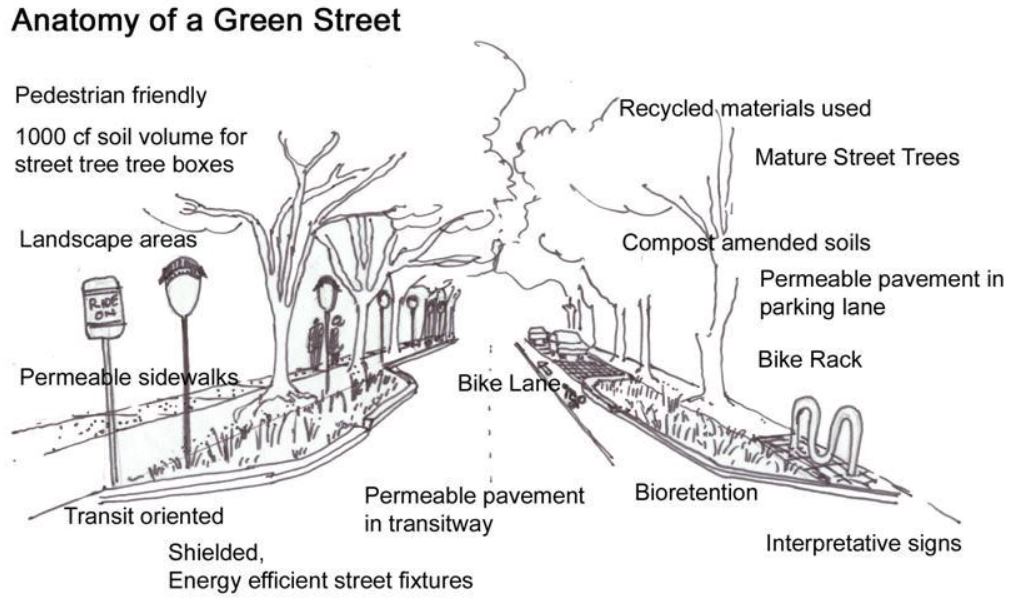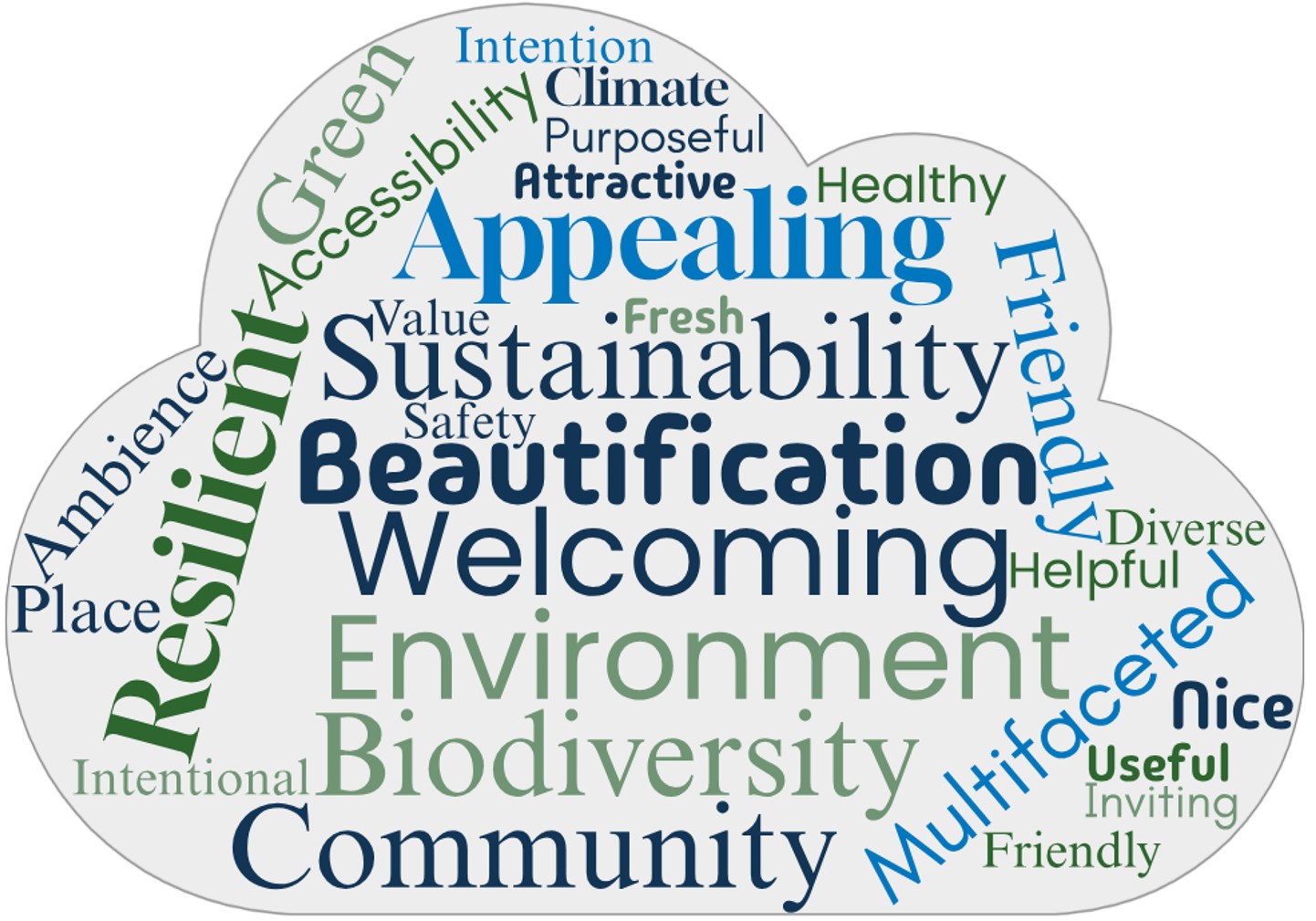Beautification
Planting trees and native vegetation, adding landscaped medians along streets, and decreasing the number of lanes can create more inviting spaces. Street trees increase sidewalk shade, allowing for businesses to have more inviting sitting areas or “parklets” for customers, which in turn allows for more socializing opportunities.








